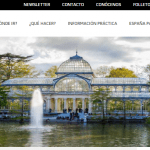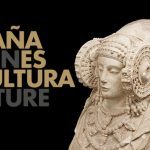SEGITTUR has presented in Sanxenxo (Pontevedra) the circular economy manuals for destinations and tourism companies, as well as the Guide for Best Practices, a useful tool to advance towards circularity in tourism.
The presentation included the participation of the President of SEGITTUR, Enrique Martínez; the mayor of Sanxenxo, Telmo Martín; the Director of Sustainable Development of the UNWTO, Dirk Glaesser; the Visita Gijón Director, Daniel Martínez; and the head of the Sustainable Tourism Observatory. Fundació Mallorca Turisme, Mónica Núñez.
The President of SEGITTUR has stressed that “aware of the need for a development model that combines prosperity with respect for the planet’s limits, the circular economy has been consolidating as a priority strategy of the European Union”. In this context, SEGITTUR has prepared manuals for the tourism sector.
The pressure exerted until now by a linear production model based on the premise of “extract-manufacture-use-throw” has generated consequences with a global scope and local impact such as climate change, the scarcity of raw materials and resources, the increase in waste and polluting agents, and the loss of biodiversity, all with an effect on tourism.
Aware of this, SEGITTUR maintains its commitment to supporting the tourism sector on its path towards sustainability by updating its Circular Economy Manuals for destinations and for tourism SMEs.
The result stems from a thorough analysis of secondary sources, with more than 10 interviews with experts in the tourism sector and sustainability, and a participatory application of the methodology proposed in these documents to four tourist destinations from the Network of Smart Destinations (Gijón, Malaga, Mallorca and Ribera de Navarra) to assess key barriers and opportunities of destinations and their business fabric in promoting circular tourism.
Both manuals aim to become a tool to define the roadmap for the transformation of the tourism sector towards circularity. The goal is to guide destinations and tourism companies either in developing a detailed roadmap that complements their own sustainable tourism planning instruments, or in defining the first steps in this transition process by identifying specific key actions, which are relatively simple to address.
The first two parts of the manuals are an introduction to the concept of circular economy and its connection with global tourist activity and in Spain. As a complement, the third part delves into the development of a roadmap towards circularity on the basis of four key questions: Where are we now in terms of circular tourism? Where do we want to go? How do we get there? And once the action plan has been defined, what is our performance?
For each of these questions, the manuals not only provide a methodology to follow but also include practical examples, work templates and indicative lists of potential actions to carry out.
The Guide for Best Practices contains 30 examples of circular economy in destinations, companies and institutions linked to waste, mobility, food, energy efficiency, green purchasing, extension of useful life, resource recovery and circular supplies, among others.





